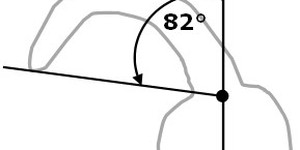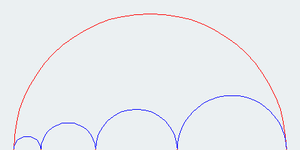Science Projects (1,332 results)
|
Select a resource
Sort by
|
Is an I-beam as strong as a solid beam of the same size? What if you include weight in the comparison: which beam has the greater strength-to-weight ratio? Would an I-beam be stronger than a solid rectangular beam of the same weight? What about other structural shapes (e.g., T-beams, U-beams)? In this project you can find out by setting up a test stand, putting on your safety goggles and measuring how much stress these building components can handle before they snap.
Read more
Featured
Have you heard that garlic powder is supposed to inhibit the growth of bacteria? Which do you think would make a better disinfectant: a solution of garlic powder or a solution of bleach? This project shows you a straightforward way to compare the effectiveness of different disinfectants (or other antimicrobial agents), by measuring zones of inhibition on a culture plate.
Read more
You have probably heard about left-brain and right-brain differences in people. The left brain is supposed to be better at language, and organizing sequential actions, the right brain is supposed to be better at visualizing orientations in space, making and listening to music, and deciphering the emotions of others. Is there evidence for left/right brain specialization in other animals? This project examines tail-wagging in dogs. Does tail-wagging show any evidence of left/right brain…
Read more
When you think of successful inventions from the 1900's that have dramatically changed how people live, what comes to mind? The car? Radio? TV? The computer? What about the microwave oven? You might not remember a time when microwave ovens were not a standard part of most kitchens, but your parents or grandparents probably do. They can remember when heating leftovers took a good 30 minutes in a traditional oven. Or thawing a food from the freezer meant leaving it in the refrigerator overnight.…
Read more
We can't say it any better than he did, so here is Ryan Ponec's capsule description of his excellent project (Ponec, 2002): "At the end of a lesson, a teacher will sometimes have students summarize the information presented by stating, 'Tell me something you learned.' The purpose of this experiment is to determine whether or not this 'lesson summary' significantly enhances the students' ability to later recall the information presented. Students from grade levels fifth through eighth were…
Read more
Brrrr, freezing cold! It's the worst nightmare of any fresh fruit or vegetable! If the produce in your kitchen had legs, they would run in a panic every time the freezer door opens. Why? Well, freezing temperatures are not kind to fresh produce. Freezing kills the plant tissues and alters them on both a chemical and physical level. Chemically, the enzymes in the produce become more concentrated and do not work normally, so that discoloration, off-flavors, vitamin breakdown, and toughness may…
Read more
The Falkirk Wheel is a rotating boat lift connecting the Forth and Clyde Canal with the Union Canal near Falkirk in central Scotland. It consists of two diametrically opposed caissons which rotate to lift boats between the two canals through a height of 35 meters. The wheel is always perfectly balanced and, despite its enormous mass, rotates through 180° in less than four minutes, using just 1.5 kilowatt-hours (Wikipedia contributors, 2006). Do background research…
Read more
All animals need to respond to changes in their immediate environment. The sensory structures of animals are each made to respond to distinct types of sensory stimuli: touch, taste, sound, light and smell. How are these stimuli received? Different animals have different strategies for receiving stimuli and develop specialized structures for doing so. Antennae, ears, noses, tongues, eyes, eye spots, hairs and bristles are all examples of sensory structures used by different animals to sense…
Read more
This a straightforward, but interesting, project in geometry. It is a good first proof to try on your own. You should be able to figure it out by yourself, and you'll gain insight into a basic property of circles.
Figure 1 below shows a semicircle (AE, in red) with a series of smaller semicircles (AB, BC, CD, DE, in blue) constructed inside it. As you can see, the sum of the diameters of the four smaller semicircles is equal to the diameter of the large semicircle. The area of the larger…
Read more
What do knots, maps, mazes, driving directions, and doughnuts have in common? The answer is topology, a branch of mathematics that studies the spatial properties and connections of an object. Topology has sometimes been called rubber-sheet geometry because it does not distinguish between a circle and a square (a circle made out of a rubber band can be stretched into a square) but does distinguish between a circle and a figure eight (you cannot stretch a figure eight into a circle without…
Read more
What makes a winning team? Getting all the best players? Good coaches? Good chemistry? This project will show you how you can use math to help you test your hypothesis about what makes a winning team.
The Pythagorean relationship is a fundamental one in sports: it correctly predicts the records of 98% of all teams. But in 2% of cases, it fails. Why does it fail? Find teams that deviated substantially from their expected Pythagorean record (this information is available for baseball teams…
Read more
|





